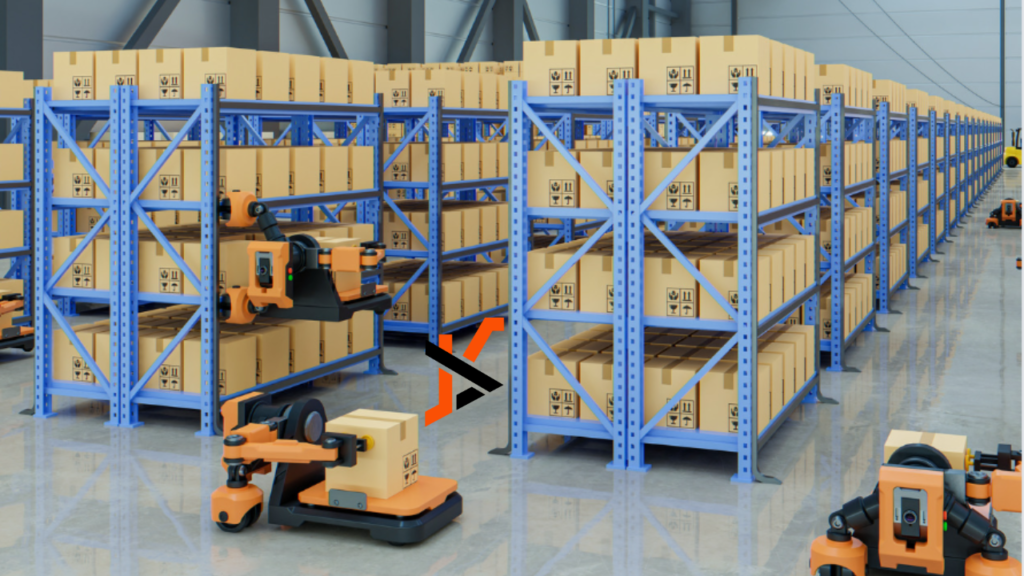Warehouses play a crucial role in supply chains by facilitating the storage, management, and distribution of goods. In response to the ever-increasing demands of the modern market, Robotic storage is adopting automation solutions, with robotics leading the charge. This article delves into the world of warehouse robots, exploring their types, benefits, and impact on warehouse operations.
Types of Warehouse Robots
Automated Storage and Retrieval Systems (AS/RS)
AS/RS integrates automated storage racks and robotic arms to store and retrieve goods efficiently. These systems optimize space utilization and streamline inventory management, enhancing overall warehouse efficiency.
Mobile Robots
Versatile mobile robots navigate warehouse floors autonomously, facilitating seamless goods transport between storage areas, picking stations, and shipping docks. Their agility and adaptability make them invaluable assets in warehouse environments.
Automated Guided Vehicles (AGVs)
AGVs are unmanned vehicles equipped with sensors and navigation systems, enabling them to move materials within a warehouse. These vehicles follow predetermined paths or guide markers on the floor, ensuring efficient and precise material handling.
Autonomous Mobile Robots (AMRs)
AMRs are self-navigating robots capable of dynamically adapting to changing warehouse environments. From inventory scanning to picking and pallet transportation, AMRs perform various tasks with precision and efficiency, boosting overall warehouse productivity.
Collaborative Robots (Cobots)
Cobots work alongside human workers, enhancing efficiency and safety in warehouse operations. By assisting with tasks such as picking, packing, and palletizing, cobots facilitate seamless collaboration between humans and robots.
Transforming Warehouse Operations with WRT
Warehouse Robotics Technology revolutionizes traditional warehouse operations in several key areas:
Increased Efficiency and Productivity
Studies have shown that warehouse automation with robots can improve picking rates by up to 50% and overall order fulfillment speed by 20%. This is achieved by automating repetitive tasks like picking, packing, and transportation, allowing human workers to focus on higher-value activities.
Additionally, robots operate 24/7 without fatigue, further boosting throughput and operational efficiency. Warehouses can leverage this increased capacity to meet growing demands and tight delivery deadlines with greater ease.
Enhanced Safety
Warehouse accidents are a major concern, with manual material handling a leading cause of injuries. Warehouse robots can significantly reduce this risk by handling heavy lifting and hazardous materials. For instance, robots can automate the movement of pallets weighing up to 2500 lbs, significantly reducing the risk of musculoskeletal injuries for human workers. This focus on robotic automation for dangerous tasks fosters a safer work environment and allows warehouses to prioritize employee well-being.
Scalability and Flexibility
Warehouse Robotics Technology systems are designed to be modular and adaptable. Businesses can easily scale their robotic workforce up or down based on seasonal fluctuations in order volume or adjust robot deployment to accommodate changes in warehouse layout. For example, Autonomous Mobile Robots can be programmed with new routes as the warehouse configuration evolves, offering unmatched flexibility in adapting to changing operational needs. This scalability and flexibility ensure WRT systems remain valuable assets regardless of future business growth or operational shifts.
Innovative Robotic Storage Solutions
Goods-to-Person (GTP) Systems
GTP systems bring items directly to warehouse workers, minimizing travel time and enhancing order fulfillment speed. By streamlining the picking process, GTP systems optimize warehouse efficiency.
Vertical Warehousing
Robotic systems utilize vertical space to enable high-density storage and retrieval, maximizing warehouse capacity without compromising efficiency. Vertical warehousing solutions are particularly effective in space-constrained environments.
Integrated Inventory Management and Tracking
Warehouse robots seamlessly integrate with inventory management software, providing real-time visibility into stock levels and locations. By accurately tracking inventory, warehouses can optimize stock management and minimize stockouts.
The Future of Warehouse Robotics
The future of warehouse robotics is characterized by ongoing innovation and technological advancements, including:
- Further integration of artificial intelligence (AI) and machine learning (ML) to enhance robot autonomy and decision-making capabilities.
- Expansion of robotic applications beyond traditional warehousing tasks, encompassing last-mile delivery and reverse logistics.
- Development of collaborative ecosystems where robots, humans, and AI systems work together synergistically to optimize warehouse operations.
Conclusion
Warehouse robotics represent a transformative force in the logistics industry, enabling warehouses to operate with unparalleled efficiency, safety, and flexibility. As technology continues to evolve, the role of robots in warehouses will only expand, driving further innovation and reshaping the future of supply chain management. Embracing warehouse robotics isn’t just about staying competitive; it’s about unlocking new levels of productivity and agility to meet the demands of tomorrow’s marketplace.

